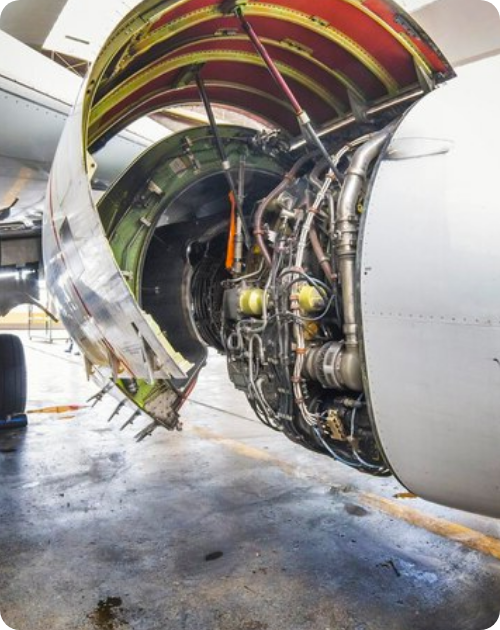Aerospace
Overview
The aerospace industry is a complex field that involves the design, development, production, and operation of aircraft, spacecraft, and related systems. This industry is a major contributor to the global economy, and it plays a crucial role in transportation, defense, and space exploration. DV Research are a recognized industry leader in the fields of aerodynamic and aerospace engineering.
Our team has many years of experience in simulating numerous issues in several CFD domains utilizing numerical modeling softwares; this enables us to offer services such as modeling, meshing, simulations and fundamentals. Impact damage is accurately simulated and correlated with vulnerability events. Now, combining new methods with old creates entirely new processes that take us further than ever before.


An official contract will be set based on your project description and details.

As we start your project, you will have access to our Portal to track its progress.

You will receive the project’s resource files after you confirm the final report.

Finally, you will receive a comprehensive training video and technical support.
Design for the Future of Aerospace
The future of aerospace is likely to be characterized by continued technological innovation and a focus on sustainability and efficiency. Here are a few key areas where DV Research contribute:

Electric and hybrid propulsion: In recent years, there has been a push to develop electric and hybrid propulsion systems for aircraft, with the goal of reducing emissions and noise levels. These systems may become increasingly common in the future, particularly for smaller aircraft and drones.
Autonomous flight: Advances in artificial intelligence and sensor technology are making it possible to develop fully autonomous aircraft. These aircraft could be used for a variety of applications, including cargo transport and search and rescue missions.
Sustainable materials: The aerospace industry is working to develop new materials that are stronger, lighter, and more sustainable than those currently in use. This could lead to the creation of aircraft that are more fuel-efficient and have a smaller environmental impact.
Personal air transportation: There has been a recent surge in interest in developing personal air transportation systems, such as vertical takeoff and landing (VTOL) aircraft and flying cars. These systems could revolutionize the way we commute and travel, and could potentially reduce congestion on roads and highways.
Increase Engineering Agility
As aerospace organizations strive to reduce development times by using simulations, DV Research is being entrusted with designing, analyzing, and certifying parts. This is exciting the development of a new type of technology, methodology and tools, which offers a place to design, analyze, edit the geometry and optimize, enabling fast design iterations. DV Research implements following methods:
Invest in Numerical modelling technology: Adopting advanced tools like numerical modelling help aerospace engineering organizations to build and test their designs more quickly and efficiently.
Collaboration and communication: Encourage open and frequent communication among team members and with other departments, partners or collaborators. This can help to identify and address potential issues early on, and facilitate quicker decision-making and problem-solving.


Flexibility and adaptability: Have a flexible and adaptable mindset and be open to new ideas and approaches. This can help to respond quickly to changing circumstances and pivot as needed.
Lean principles: Implement lean principles, such as reducing waste, eliminating unnecessary steps, and streamlining processes. This can help to increase efficiency and speed up development.
Modular design: Adopt a modular design approach, which allows different components or subsystems to be developed and tested independently and then integrated later on. This can help to reduce dependencies and accelerate development.
Continuous improvement: Cultivate a culture of continuous improvement and encourage team members to identify and address problems and inefficiencies in their work processes. This can help to drive ongoing progress and increase agility over time.
Unmanned Aerial Vehicle in aerospace
Drones, also known as unmanned aerial vehicles (UAVs), have a wide range of applications in the aerospace industry.
DroneVionics provides drone services in aerial photography and videography, surveying and mapping, inspection of aircraft and infrastructure, and search and rescue operations. Also, DroneVionics contributes in performing scientific research, collect meteorological data, and assist in disaster relief efforts using drones. Drones offer a versatile and cost-effective alternative to traditional aircraft in many aerospace applications.
